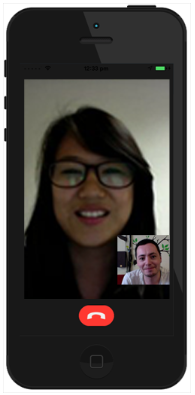We've all had positive experiences where we've sat in a room with a health care professional who checked our vital signs, listened to our health concerns, asked the right questions and made strong recommendation to us. Face-to-face care is great - until it isn't. One of the silver linings of the COVID-19 pandemic is the emerging importance of remote care. With the increased attention legislation to expand and reimburse for telehealth across the healthcare world is beginning to pass.
But even in a pandemic-free world there are incredible benefits to telemedicine. Some of these benefits are:
The goal of this page is to provide education and best practices about remote care. It's organized like a book with chapters listed on the left so you can jump to the topics that interest you most.
A comprehensive telehealth solution lets medical professionals to engage live, but also enables patients to manage their own care with professional oversight.Here are the elements you should look for in a comprehensive solution:
- Secure Chat and Video Chat: You need a Facetime-like capability that is secure. It should also capture the times of your communications and let you take notes on what was discussed. It should also have secure chat (so you can message and hear back asynchronously)
- Care Plans that you can monitor remotely: In many cases, we know that our patient can turn their health around if they can stay on their care plan and let you know how they're doing. With multiple clients of diverse needs, you need to manage by exception and see at a glance who has alerts or isn't staying on their plan
- Rich Care Plans: The best way to think about remote care plans are in terms of simple elements including Reminders (take your meds), measurements (like pain or weight), and activities (like exercises).
- Simplicity: When we think of telehealth, we might be picturing a complicated device with wires, scales and screens. That doesn't cut it any more. Today's telehealth should serve most patients with just their cell phone.
At some point we've all thought that if we could check in with our patients daily, keep them engaged and remind them what it will take to achieve their goals that we know they would succeed. But, of course we can't... we're all overseeing care for too many people for that to feasible
As described above, a comprehensive telehealth solution includes "Care Plans that you can monitor remotely." This implies that the patient is managing their own plan. In order for patients to adhere to their care plans, you need to key ingredients:
That said, even the best designed care plans won't ensure compliance. This leads into our next topic...
As a clinician overseeing a large number of patients, one of the biggest concerns is that you won't have the time to monitor alerts or non-compliant patients. This is where you need the computer to help you. Best practice are as follows:
This is a very important question! As we've established, we want our patients to self-manage their care so that we can manage by exception, and that in order to do so, we need compliance to be simple and to have gentle reminders.
The next question is what should be in their plan. Let's start with the kinds of things that you may wish to include in a care plan:
A comprehensive telehealth solution needs to be able to collect vital signs and other measures. There are multiple ways to do this, including the following:
There are many factors to help determine which approach to use. Read more below in the section titled Telehealth with Large Populations.
Perhaps the first thing we think of with telehealth is the ability to have a video-chat (like Facetime) with a patients. This is a critical element of telehealth. A few key features that you want to look for are 1) the ability to document the date and times of your video chats, and 2) the ability to annotate the key takeaways for your session.

Equally important are the ability to have voice conversations and to be able to chat securely. A great thing about chat is that it is asynchronous - you can send messages to patients at any time and they can get back to you at their convenience.
The Triple Aim of Healthcare (from the Institute for Healthcare Improvement) inspires us to deliver the best experience of care, at the lowest cost, to the maximum population. Population health is the hardest to achieve, but telehealth can help get us there.
The key to serving the maximum population is to deliver remote care that matches but doesn't exceed the patient's need. Think of the care level in tiers like a pyramid. Starting at the bottom of the pyramid, here are the layers:
Some Authoritative Telehealth sites are as follows: